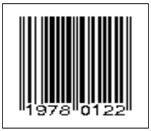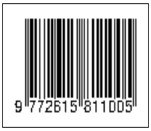IMPLEMENTASI UNDANG-UNDANG NOMOR 32 TAHUN 2002 TENTANG PENYIARAN OLEH MEDIA PENYIARAN DI NTB (Studi di TV 9 Lombok)
Abstract
The use of the internet in changing the way consumers communicate and consume television media content is known as "media disruption". This disruption or disruption occurs because of technological changes and the innovations that follow. This disruption or disruption to innovation has made a number of televisions competing to take advantage of the development of the internet in creating content, both entertainment and news content, where in this era of disruption television broadcast content is filled with content that takes content from the internet such as Youtube and other streaming social media.
With the existence of broadcast program regulations that take snippets of images and / or sound clips from other broadcasting institutions, researchers are interested in knowing more about broadcast programs and the implementation of Law Number 32 Year 2002 concerning Broadcasting.
This study aims to determine the implementation and obstacles of Law Number 32 Year 2002 concerning broadcasting by Lombok TV9 broadcasting media in the era of disruption.
This research is a normative empirical research with a research approach using a statutory approach, a conceptual approach, a case perspective and a comparative perspective. Types and sources of research data are primary data and secondary data with primary and secondary legal materials. Data collection techniques in the form of interviews, literature study and documentation.
The results of this study indicate that TV9 Lombok in implementing Law Number 32 of 2002 concerning Broadcasting in the era of disruption has not been implemented properly due to several obstacles including: lack of coordination and knowledge of broadcasting regulations and not carrying out the stages of television program programs properly.Keywords
Full Text:
PDFReferences
Badjuri, Adi, 2010, Jurnalistik Televisi. Graha Ilmu. Yogyakarta
Badrun A.M et.all, 2004, Potret Penyiaran NTB. KPID NTB. Mataram
Christensen, Clayton Michael, 1997, The Innovator’s Dilemma : When New Technologies Cause great Firms to Fail. Boston, USA: Harvard Business School.
Dijck, Jose Van & Thomas Poell, 2015, Making Public Television Social? Public Service Broadcasting and the Challenges of Social Media. USA: Television & New Media.
Edward III, Geoge C, 1980, Implemeting Public Policy. Washington DC: Congressional Quarterly Press.
Hadari, Nawawi, 2007, Jaringan informasi yang dapat digunakan untuk berbagai.: Gadjah Mada University Pres. Yogyakarta
Koentjaningrat, 1999, Metode Penelitian Masyarakat. PT.Gramedia Pustaka Jakarta.
Komisi Penyiaran Indonesia, Pedoman Perilaku Penyiaran (P3) Dan Standar Program Siaran (SPS), (Jakarta, 2012), Hal. 70
Moelang, Lexy J, 2007, Metodologi Penelitian Kualitatif, Edisi Revisi.: Remaja Rosdakarya Bandung.
Muhammad, Abdulkadir, 2004, Hukum dan Penelitian Hukum.: Citra Aditya Bakti. Bandung
Nazir, M, 1988. Metode Penelitian.: Ghalia Indonesia. Jakarta
Peraturan Pemerintahan Nomor 12 Tahun 2005 tentang LPP RRI.
Riswandi, 2009, Dasar-Dasar Penyiaran. Graha Ilmu. Yogyakarta
Sekaran, Uma, 2011, Research Methods For Business (Metode Penelitian Untuk Bisnis). Salemba Empat. Jakarta
Soekanto, Soerjono, 1986, Pengantar Penelitian Hukum. Penerbit Universitas Indonesia. Jakarta
Soekanto, Soerjono, 2006, Penelitian Hukum Normatif. PT Raja Grafindo Peresada. Jakarta
Syahputra, Iswandi, 2006, Junalistik Infotainment : Kancah Baru Jurnalistik dalam Industri Televisi.: Pilar Media. Jogjakarta
Undang-Undang Penyiaran Nomor 32 Tahun 2002 Tentang Penyiaran.
Undang-Undang Nomor 24 Tahun 1997 Tentang Penyiaran
Wahyudi, J.B, 1994, Dasar-dasar Manajemen Penyiaran. Gramedia. Jakarta
Zoebazari, Ilham, 2010, Kamus Istilah Televisi & Film (Paperback). PT Gramedia Pustaka Utama. Jakarta
DOI: https://doi.org/10.35327/gara.v14i2.150
Refbacks
- There are currently no refbacks.
Copyright (c) 2020 GANEC SWARA

This work is licensed under a Creative Commons Attribution-ShareAlike 4.0 International License.
TERINDEKS
|
_______________________________
Ganec Swara
Published by UNMAS Denpasar K. Mataram |
Email: ganecswara@gmail com; aminullahmtk@gmail.com

This work is licensed under a Creative Commons Attribution-ShareAlike 4.0 International License.











